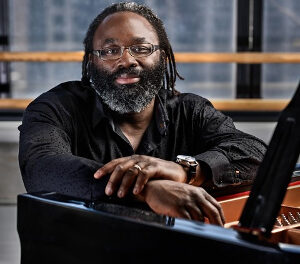This past Saturday, the Greensboro Symphony took the stage at the Steven Tanger Center for the Performing Arts to present a program that asked “what is ‘American Music’ and who gets to define it?”. Led by guest conductor Leslie B. Dunner, the orchestra presented three works pertinent to the United States and representative of the American Spirit: Duke Ellington’s The River, a reimagined version of Samuel Coleridge-Taylor’s Symphonic Variations on an African Air, and Antonin Dvořák’s Symphony No. 9 in E minor “From the New World.” Before the concert, students from the Lillian Rauch Beginning Strings Program at the UNCG School of Music performed in the lobby, and I thought this act of community engagement fit perfectly with the united theme of the evening. The orchestra itself demonstrated technical accuracy and emotional sensitivity to the program, and the resulting concert was a spiritually fulfilling and intellectually stimulating event.
After a few announcements and the venue’s classic “Schiffman Ring of Light” display, the concert began with Ellington’s The River, an orchestral suite comprised of music from his ballet of the same name. According to the evening’s program notes, the piece is a “poetic celebration” of the Mississippi River, and I thought the ensemble did a fantastic job demonstrating the programmatic nature of the work through the intentional passing of phrases and use of expansive dynamics. Extended solos were accompanied thoughtfully and I felt as though the ensemble blended timbres with great awareness to who had the primary melodic material. Dunner’s conducting was fluid yet accurate; he navigated the orchestra through gestural material and jazzy rhythmic interplay with great care to dynamics and character. The last movement started with Dunner hollering “a 1, 2, ready and!”, and the blend between jazz bandstand and orchestral maestro was the perfect way to end the piece.
After the applause died down and the stage was set, the audience welcomed the evening’s guest artist, Aaron Dworkin, to recite his work The American Rhapsody, a libretto set over Coleridge-Taylor’s symphonic work Variations on an African Air. Dworkin is a multi-racial American man whose personal background represents the melting pot that is our country. The libretto uses speeches and writings from George Washington incorporated with historical context and a glimpse into Dworkin’s own background. The audience was given a handout with the libretto at the beginning of the evening and it was so beneficial to properly appreciate the words that were spoken about unity and humanity. The accompanying music made the narration even more impactful; the ensemble had a rich, lush sound that provided a strong foundation for Dworkin’s speech, and there was nice interplay between the soloist and melodies. I thought the music provided an important dramatic element to the programmatic work as well; near the end, the orchestra stopped playing as Dworkin continued, making that paragraph feel like a cadenza and highlighting the words specifically. When the music returned, the brass fanfare seemed to emphasize the text, and the final chords delivered a sense of purpose and weight. The audience gave a standing ovation instantly and I consider myself privileged to have experienced such a moving work in person.
After intermission, the audience settled in as the orchestra tuned in preparation for Dvořák’s “New World Symphony.” This piece, though written by a Czech composer, is inspired by several folk music styles and serves as an attempt to develop a “uniquely American variety of classical music.” Blending his European compositional techniques with the songs of Native Americans and African-American spirituals, Dvořák’s Symphony No. 9 has become a staple in the classical canon. I’ve become quite familiar with this piece throughout my time as a student and performer, but Saturday’s performance sticks out to me due to the context provided by the other pieces on the program. Going into the second half, I was still thinking about the words spoken by Dworkin and the historical context of our nation. While there is still so much to be done, there are many things worth celebrating; the union of cultural and musical styles found in Dvořák’s work served as a good representation of that, and the Greensboro Symphony put on a performance full of technical precision and emotional fortitude to match. The first movement demonstrated clear character contrasts and pointed energy, while the second movement highlighted the ensemble’s ability to seemingly suspend reality, largely in part due to the breathtaking English horn solo by Anna Lampidis and delicate strings. The third movement’s lively rhythmic motif featured impressive interlocking, and I especially admired the timpanist’s explosive entrances. The finale had explosive energy and lovely pacing between bombastic and beautiful themes; the inner voices maintained consistent pacing, and anytime the brass had a chorale, they filled the entire hall with rich sound. The audience clapped between a few movements, but the standing ovation at the end was positively electric.
The Greensboro Symphony executed a musically impressive and thought-provoking program and I commend the ensemble for their commitment to community enrichment and societal reflection. The orchestra performed wonderfully and I look forward to the next time I’m able to attend a concert.











